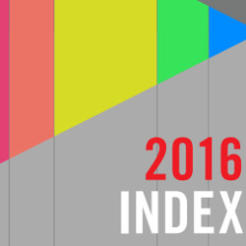A report into the transparency policies around donors to global aid has found that only 25 per cent of global aid meets transparency standards, while Unicef has made the most progress.
The 2016 Aid Transparency Index has been produced by Publish What You Fund, and follows a promise by donors in 2011 (the Busan commitment) to publish details of their development projects to a common open standard, the International Aid Transparency Initiative (IAT).
Publish What You Find looked at 46 donor organisations, which included the European Commission, individual countries, and government departments. It also looked at charitable groups such as Unicef and the Gates Foundation.
Publish What You Fund judges transparency using its Aid Transparency Index, which looks at 39 indicators including the availability of information such as budgets, procurement policies, annual reports and results.
It then marked these indicators with a percentage to work out the total score.
Findings show that of the 46 aid donors it looked at, 10 had very good transparency, while 12 were classed as performing poorly. The 10 organisations with very good transparency accounts for 25 per cent of total aid.
The United Nations Development Programme was revealed to be the most transparent donor. It was the only organisation to score over 90 per cent. The US’s Millennium Challenge Corporation came second at 89.6 per cent, followed by Unicef in third place with 89.5 per cent transparency.
Unicef has made the most progress in improving its transparency, from being classed as poor in 2013 to now being classed as very good. As part of a transparency drive, since 2013 it has created a data warehouse, an open aid portal and next plans to use its data internally and share it with its partner governments.
Other key findings:
- Ten donors have fully met the 2011 Busan commitment to aid transparency (scoring above 80 per cent), accounting for 25 per cent of total aid
- Some organisations still fail to commit to transparency efforts
- Key data on development projects from a majority of publishers still missing
- The United Arab Emirates (0 per cent) and China (2.2 per cent) are the two lowest performing donors
- The Gates Foundation was classed as fair, coming 30th with 46 per cent transparency
Rupert Simons, the chief executive of Publish What You Fund, said: “The ‘data revolution’ isn’t reaching the world’s poorest countries. The 2016 Aid Transparency Index shows that only 10 out of 46 of the world’s largest and most influential donors provided enough information to enable recipient governments to plan, or for citizens to hold their governments to account.”
Publish What You Fund made three key recommendations. These are “if you produce data, publish it”, “if you have data, use it”, and “if you don’t have data, demand it”.
It said that Civil Society organisations need to adapt and use the data, both for its activities and to hold governments to account.









